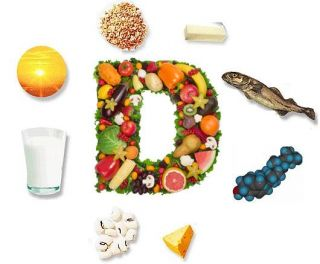Depression; often thought of as this “dark, inescapable place. Like being locked in a room with no light, windows or door. It's so dark you can't even see your hands in front of your face let alone find a way out."
Stuart Shankman spoke at Loyola University Chicago about his research he and his fellow colleagues had been conducting pertaining to the comorbidities and in particular that of depression and anxiety. Dr. Shankman going so far as to find these distinguishable characteristics between anxiety disorders and depression and then follow suit with figuring out whether the heightened sensitivity to threat was specific to panic disorder (PD) and whether a reduction in sensitivity to reward was specific to major depressive disorder (MDD). Once they gathered their information from the tests, they concluded that both PD and MDD can occur one without the other and have their own specific characteristics. The importance of this is to know that in regards to abnormal Frontal Electroencephalographic (EEG), it is written that the asymmetry of the EEG would be a better “indicator of affective processes and a marker for depression.” In terms of PD it has always been said that the abnormality of the frontal EEG as associated with anxiety, however Shankman and his colleagues demonstrated that this is not the case.
Furthermore, Dr. Shankman et al. concluded that while the research domain criteria (RDoC) and their research framework for the studying of mental disorder is in good spirits, it continues to demonstrate “discriminant validity” when analyzing pathological constructs and that their domains are too narrow. By expanding the levels of dimensions of the RDoC, one would have a clearer determination of both the similar and different constructs and neurobiology.
Therefore as it is mentioned in the article, if comorbidities are the norm then why not examine the possible relationship between a lack of vitamin D in the body and depression onset as a possible contributor to the cause in some cases depression? In a given year, approximately 14.8 million adults age 18 or older are affected each year by depression, so wouldn’t we want to explore new ways into treating this common disorder that go beyond the mainstream therapies?
The Endocrine Society released an article in 2012 relating to a case study of three women aged 42-66, all who had been diagnosed with major depressive disorder. Dr. Sonal Pathak argued that “Vitamin D may have an as-yet-proven effect on mood, and its deficiency may exacerbate depression. If an association is made present, we may see an improved treatment of depression.”
For the three women he examined, he tested them on a 25-hydroxyvitamin D blood test. Each woman had a low level of vitamin D, roughly 8.9-14.5 nanograms per milliliter (ng/mL). According to The Endocrine Society, the normal range for vitamin D levels are above 30 ng/mL. Afterwards these women underwent an oral vitamin D replacement therapy for between 8-12 weeks. Once finished, these women’s vitamin D levels increased to a range of 32-38 ng/mL. Using the Beck Depression inventory all three women previously diagnosed with moderate to severe depression, were now diagnosed with minimal to mild depression.While Dr. Pathak suggests that more research needs to be done in regards to the causal relationship between vitamin D levels and mood and depression, there clearly is a link between them.
Afterwards these women underwent an oral vitamin D replacement therapy for between 8-12 weeks. Once finished, these women’s vitamin D levels increased to a range of 32-38 ng/mL. Using the Beck Depression inventory all three women previously diagnosed with moderate to severe depression, were now diagnosed with minimal to mild depression.While Dr. Pathak suggests that more research needs to be done in regards to the causal relationship between vitamin D levels and mood and depression, there clearly is a link between them.
For the three women he examined, he tested them on a 25-hydroxyvitamin D blood test. Each woman had a low level of vitamin D, roughly 8.9-14.5 nanograms per milliliter (ng/mL). According to The Endocrine Society, the normal range for vitamin D levels are above 30 ng/mL.
Researchers from an international partnership from the University of Georgia, the University of Pittsburgh and the Queensland University of Technology took this study one step further and analyzed the relationship between Seasonal Affective Disorder (SAD) and the lacking amounts of sunlight.
They concluded that there was likely a relationship to vitamin D being a contributing factor to seasonal depression. Their evidence is supported by the fact that vitamin D levels do fluctuate in the body seasonally, which is in direct relation to the amount of seasonably available sunlight. Especially given the fact that vitamin D is a key component in the synthesizing of dopamine and serotonin within the brain.
Relating this back to Dr. Shankman’s presentation, one needs to look at the comorbidities oftentimes unknown in order to fully address the health needs of a patient. Both articles by Dr. Pathak and the University of Georgia researchers offer differing recommended levels of vitamin D; 30 ng/mL from the Endocrine Society and 20 ng/mL U.S. Institute of Medicine respectively.This indicates that within a 2 year period of time, researchers are still in need of trying to solve what the relationship between vitamin D levels and depression is.
Articles:
https://www.sciencedaily.com/releases/2014/12/141202111148.htm
Pictures:
Sources:
Endocrine Society. "Treating vitamin D deficiency may improve depression." ScienceDaily. ScienceDaily, 25 June 2012. <www.sciencedaily.com/releases/2012/06/120625152358.htm>.University of Georgia. "Vitamin D deficiency, depression linked in international study." ScienceDaily. ScienceDaily, 2 December 2014. <www.sciencedaily.com/releases/2014/12/141202111148.htm>.
Shankman, S., Nelson, B., Sarapas, C., Robison-Andrew, E., Campbell, M., Altman, S., . . . Goodman, Sherryl. (2013). A Psychophysiological Investigation of Threat and Reward Sensitivity in Individuals With Panic Disorder and/or Major Depressive Disorder. Journal of Abnormal Psychology, 122(2), 322-338.









